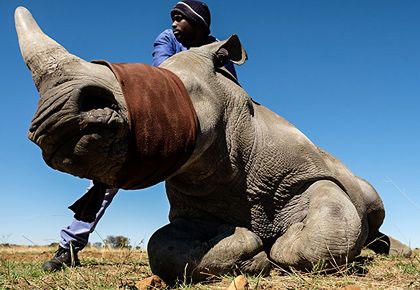The controversial idea grabs the spotlight again after the death of the last male northern white rhino.
Rhinos as a species have been in immense danger for decades. Just how real and urgent the problem is was driven home by the death of Sudan, the last-known male northern white rhino.
Apart from war and loss of habitat, the biggest danger to rhinos are the poachers who kill them for their horns. In defence against poaching, some countries in Africa with major rhino habitats have been experimenting with dehorning rhinos.
Though controversial, the idea is back in the spotlight after the failure of the attempts to breed more northern white rhinos and the imminent end of the subspecies, which now has only two surviving females.
As conservationists debate the idea, we look at how the process works.

Hume is the owner of around 1,500 white and black rhinos, which he keeps under armed guard on his 8,000 hectare property.
Photographs: Leon Neal/Getty Images.
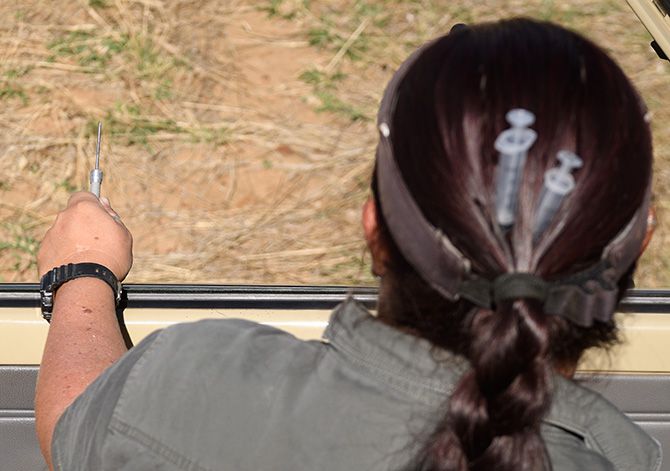
Hume is not the first to try the horn trimming approach. Small-scale attempts have been made for years and in 2014 the country of Namibia, home to the world's largest concentration of black rhinos, began official dehorning programs.
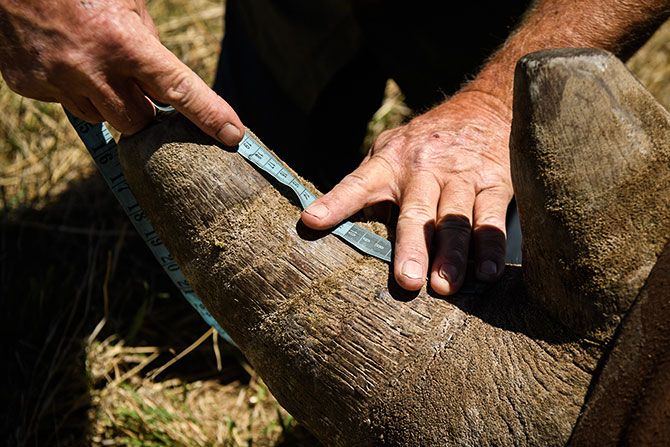
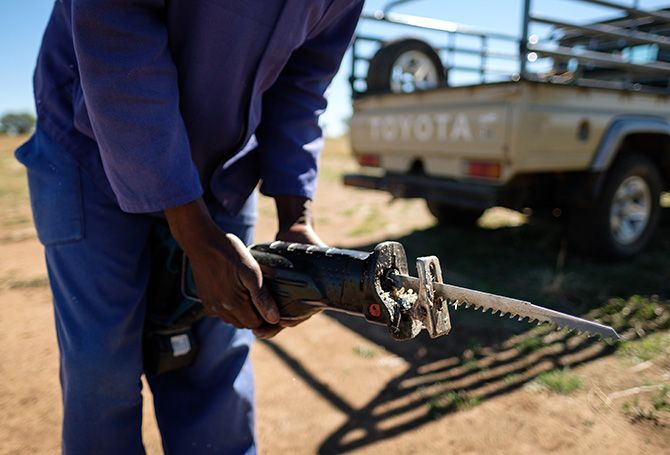
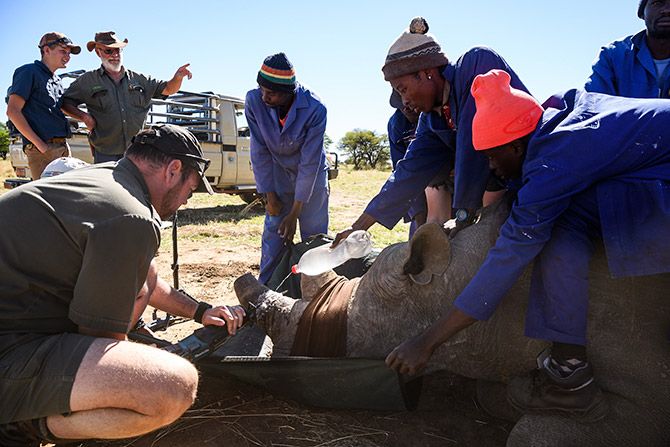
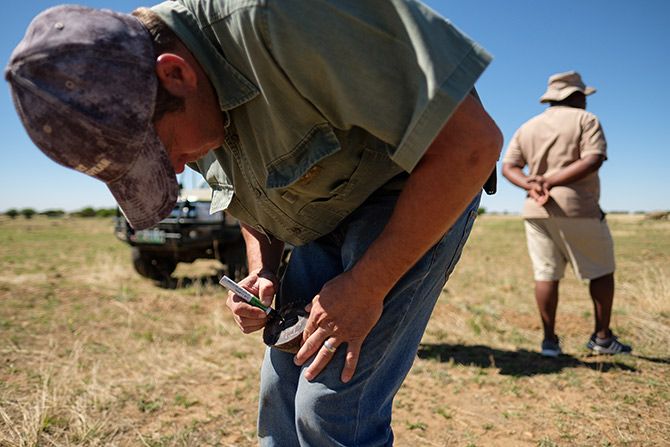

In this case, the trimmed horns were auctioned. The controversial decision to sell the horns was made on the basis that the illegal market creates an inflated value, while a controlled system would lower the prices and the need to poach.
Hume believes that the only way to ensure that the rhino does not become extinct is through farming the animals on a large scale and legalising the sale of rhino horn globally.
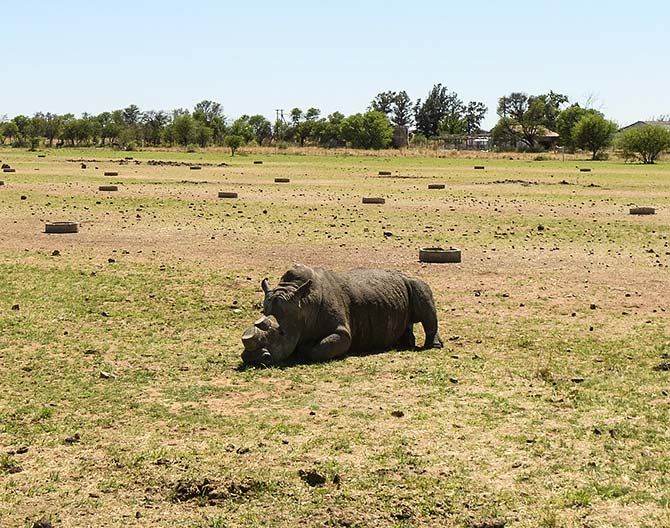
According to the World Wildlife Fund, since rhino horns -- made of the same substance as hair and nails -- grow back and the procedure has to be repeated perhaps every four years. There is disagreement about whether the process, which also involves the risk of sedation, is safe and whether it affects reproductive success in the animals.

The results of various dehorning programmes over the years have been too mixed to prove conclusive, and the Save the Rhino conservation group maintains that it cannot stand alone. For it to have any chance at real success, it has to be bolstered by anti-poaching efforts.
Recommended for you: How the planet's last male northern white rhino lived & died
